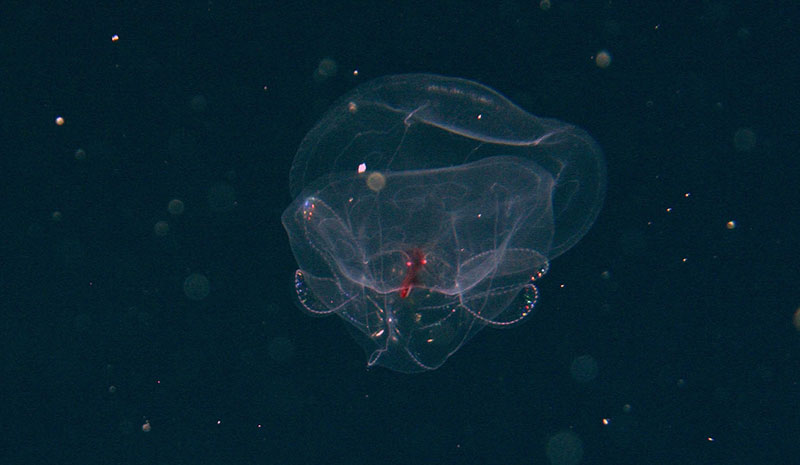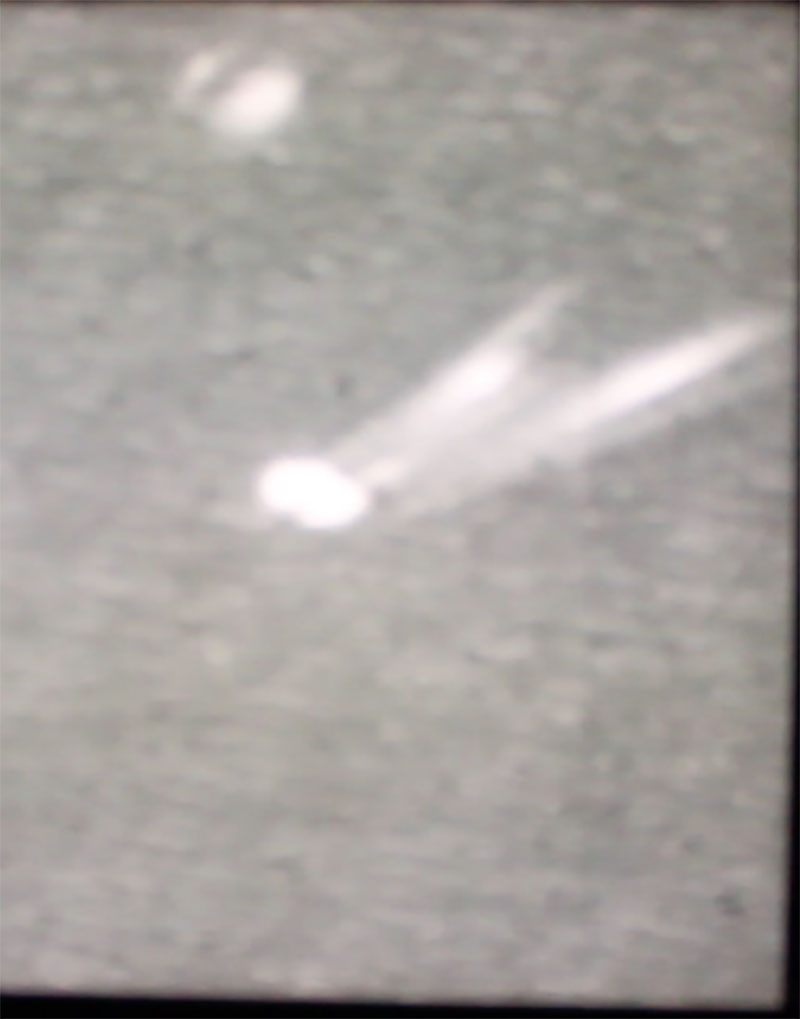
By Heather Bracken-Grissom, Ph.D., Assistant Professor - Department of Biological Sciences – Florida International University-Biscayne Bay Campus
June 14, 2019

Figure 1: The deep-sea ctenophore, Bathocyroe foserti, as photographed from the ROV at ~1,800 meters (5,905 feet). Image courtesy of NOAA OER/Global Explorer. Download larger version (jpg, 488 KB).
Instant gratification is all around us. On the click of a button, we can have food delivered in 15 minutes, the item we just saw on TV, or just about anything else our little hearts desire courtesy of Amazon. This can be equally true for scientific inquiry. In about 10 seconds, we can google the question our professor asked in class and have an answer (even if it is not the “correct" answer). Without knowing it, these conveniences have left us in a world of quick satisfaction "without the wait.” I, myself, am equally guilty of forgetting how to wait. Over the past seven days, I have been pleasantly surprised at the gentle reminder of why "the wait" makes the discovery that much more rewarding.
On June 3, we left Gulfport, Mississippi, with high hopes that we would be sampling the deep bathypelagic waters of the Gulf of Mexico the next day. However, as nature would have it, we were delayed for approximately two days by a massive rain storm that seemed to only be hovering over us. As soon as the rained cleared, we were ecstatic to be sending down the remotely operated vehicle (ROV) in search of new sources of bioluminescence. Wooohooo! This was it! We all hovered around the monitor, wide-eyed and ready for all the amazing animals we were about to witness.
However, after several deployments of the ROV, we were noticing that the animals in the water column seemed rather scarce compared to previous expeditions. We later concluded this was likely due to the fact we were stationed in the Gulf Loop Current, which brings up warmer, less productive bodies of water. Time to move.
A five-hour steam to the west gave us new hope for deep-sea novelties and bioluminescent discoveries. We sent down the ROV and “hot dawg!” ... we could immediately see a difference in the deepwater community. Yes! I was witnessing some of the most beautiful animals on our planet, including the deep-sea ctenophore, Bathocyroe foserti, seen in Figure 1.
During the ROV transects, we set up something called a “splat” screen to measure and record bioluminescence. This screen is positioned in front of a camera, the lights are turned off, and we describe and count the number of times we see bioluminescence as it hits the screen. It was like the 4th of July, but underwater! Beautiful bioluminescent displays, as seen in Figure 2.
This cruise has reminded me that so many things are still "worth the wait." So, might I suggest, the next time you are tempted to “google” that burning question or click on the next online purchase, stop and make yourself work for it. It may be more satisfying than you would think.

Figure 2: An example of extrinsic bioluminescent as seen on the splat screen from the ROV. Image courtesy of Journey into Midnight: Light and Life Below the Twilight Zone.. Download larger version (jpg, 98 KB).